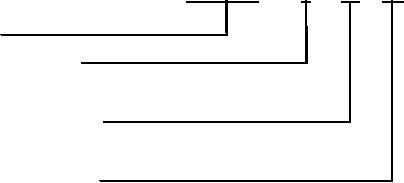
MIL-DTL-9395/41D
Pulsation amplitude: A (0 percent).
Pulsation frequency: A (0 Hz).
Pressure rise: A (less than 100 lbf/in2).
Dielectric withstanding voltage (at reduced barometric pressure): Applicable at 350 V rms.
Connector torque:
Electrical connector: 8 foot-pounds.
Pressure port mounting torque: 15 foot-pounds.
Flame test: Applicable.
Explosion: Applicable.
QUALIFICATION:
Single submission: Restricted to switch submitted.
Group submission: See table V.
PART NUMBER: Consists of M prefix followed by specification sheet number; a dash (-); and a five-letter
code. The five-letter identifies the configuration and pressure setting mode (code from table I); high-
pressure setting (coarse value code from table II) followed by fine value with applicable tolerance (code
from table III); and low-pressure setting (coarse value code from table II) followed by fine value with
applicable tolerance (code from table III). The five-letter code used in the following example identifies a
switch of configuration 1 which actuates on increasing pressure at 1.5 ±.5 lbf/in2 and deactuates on
decreasing pressure at .5 ±.5 lbf/in2.
EXAMPLE:
M9395/41-
A
AJ
AG
M prefix and specification sheet number
Configuration and pressure setting mode = code A of
table I.
High-pressure setting = code A of table II (coarse value
of 0 lbf/in2 and code J of table III (fine value of 1.5 ±.5
lbf/in2).
Low-pressure setting = code A of table II (coarse value
of 0 lbf/in2 and code G of table III (fine value of .5 ±.5
lbf/in2).
NOTE: Design limitations (actuation values and tolerances, deadband and deactuation values and
tolerances) should be coordinated with manufacturer(s) listed on the QPL for this specification sheet
before specifying a particular M number. The fact that operating characteristics can be coded does
not necessarily mean that it can be manufactured or acquired.
5